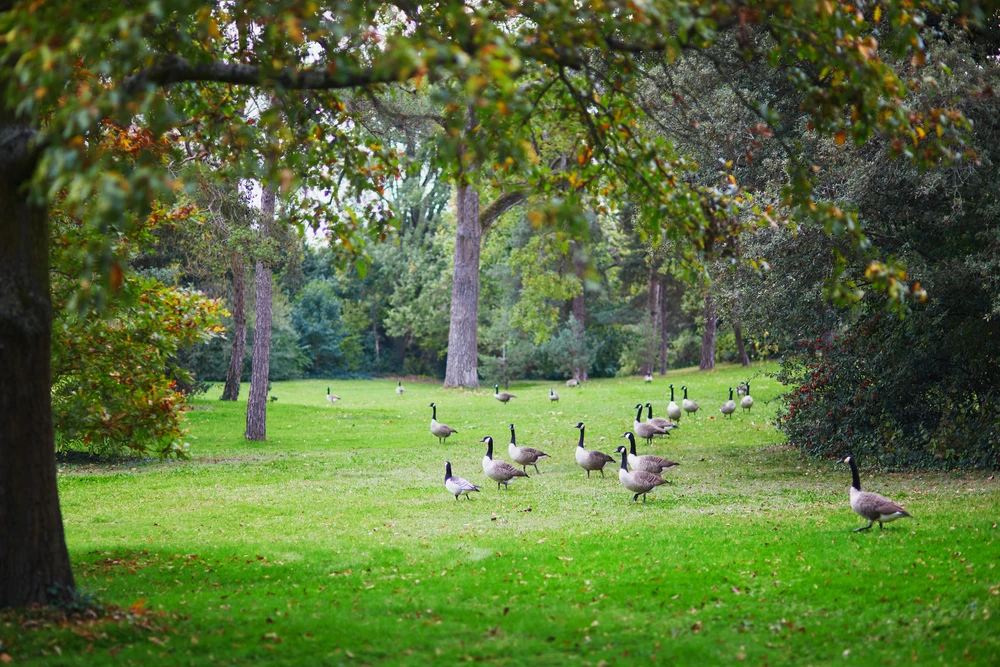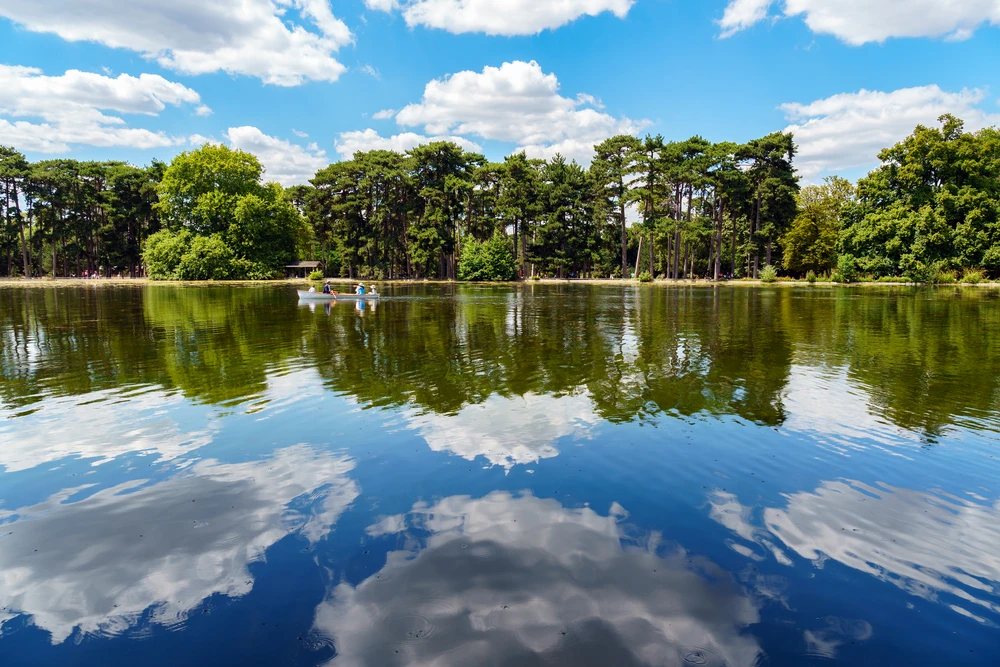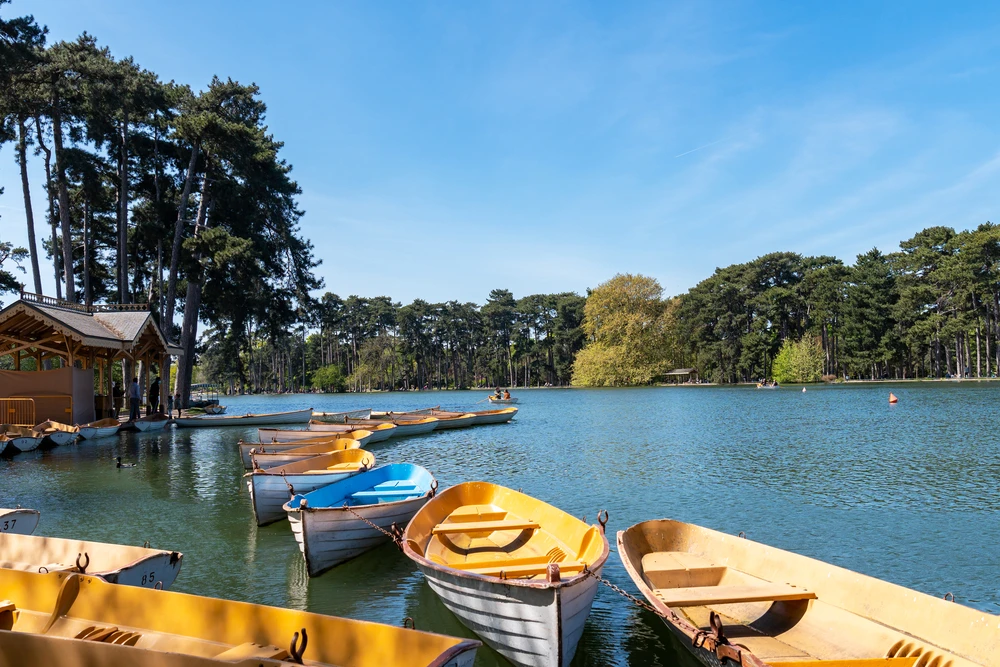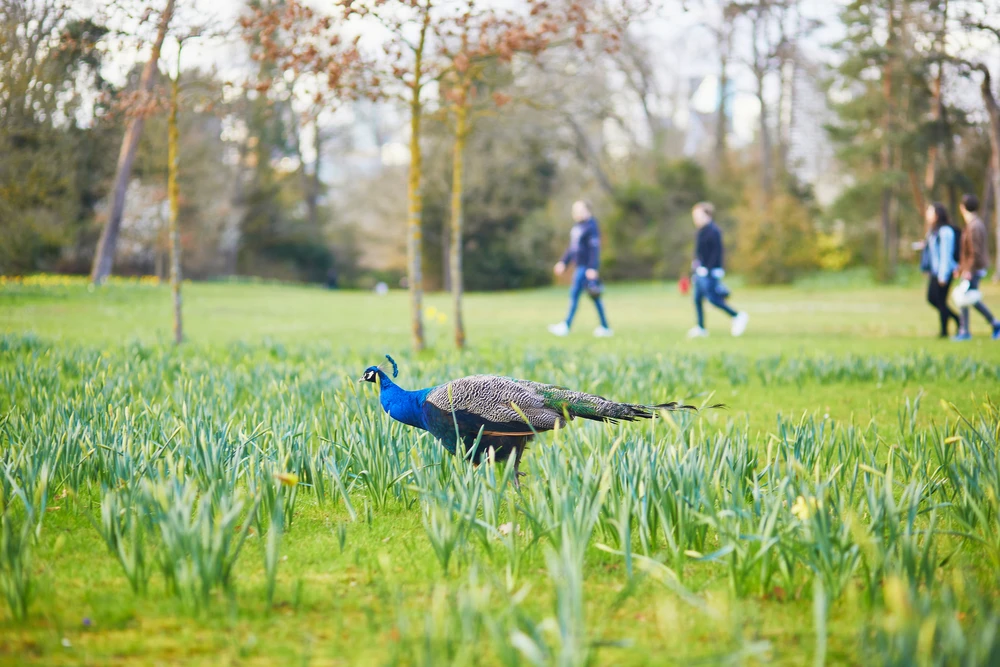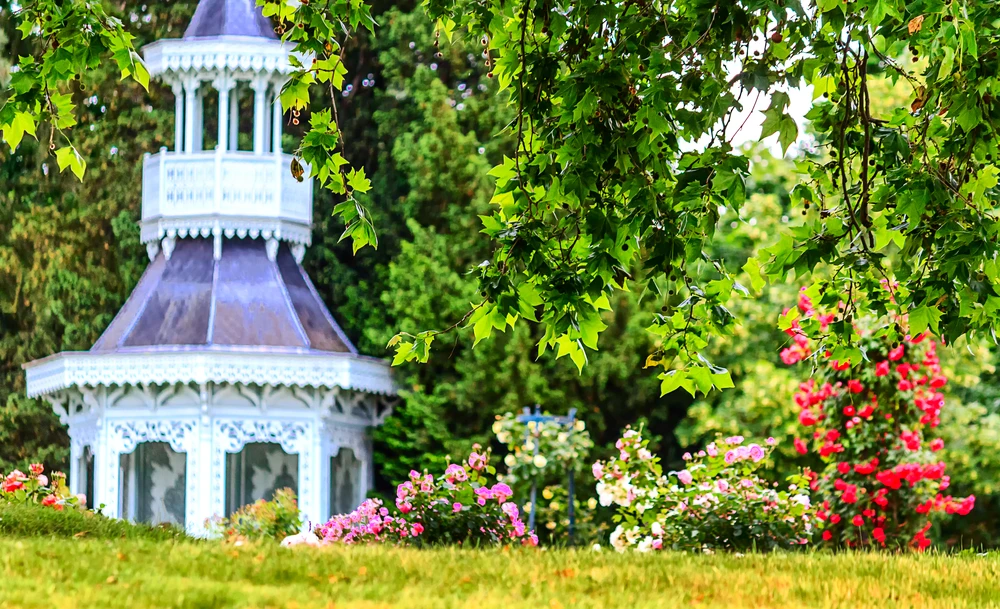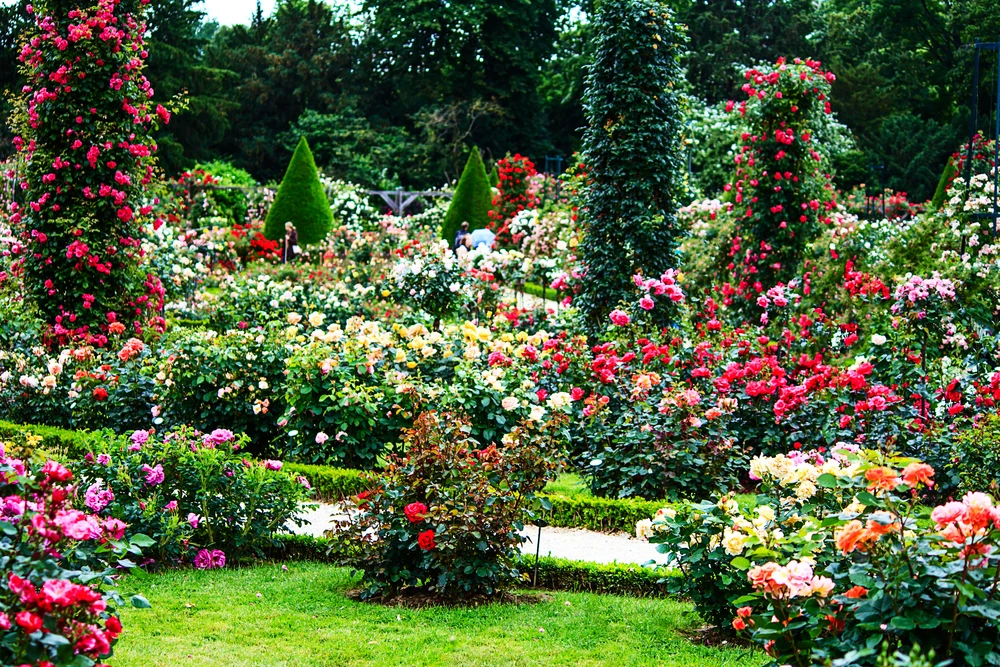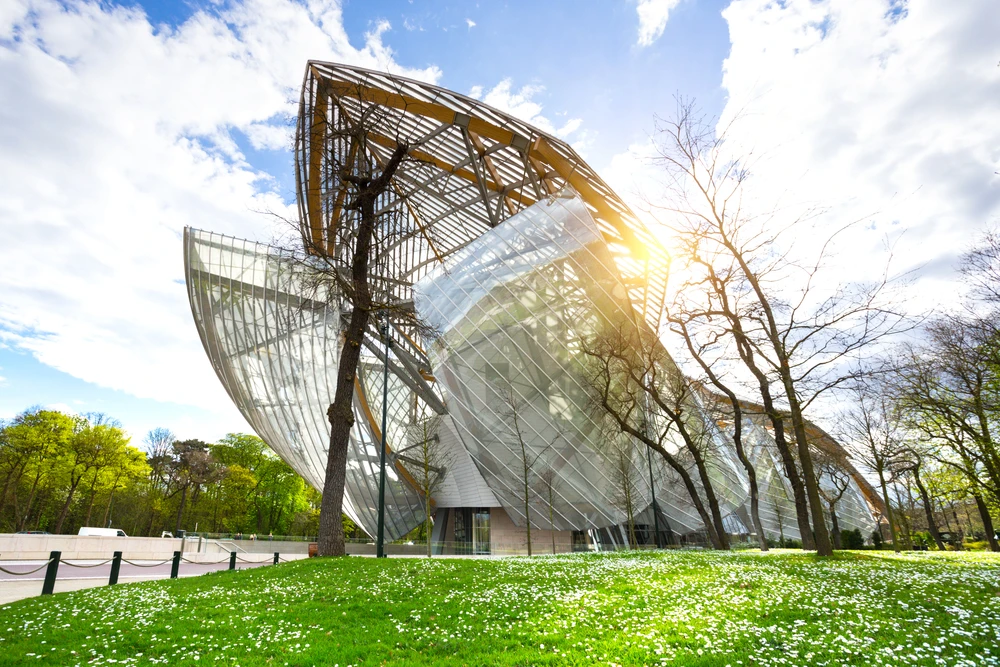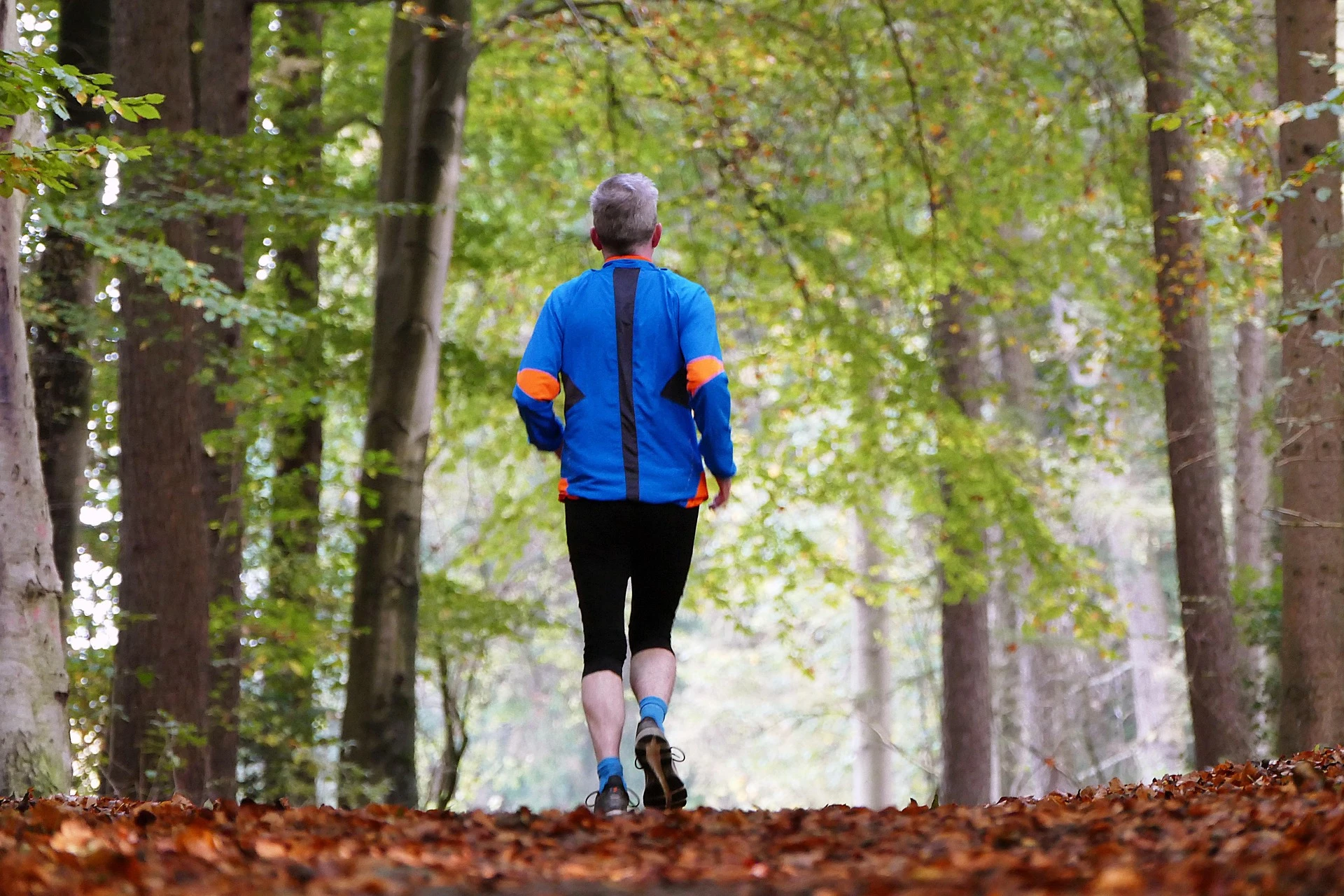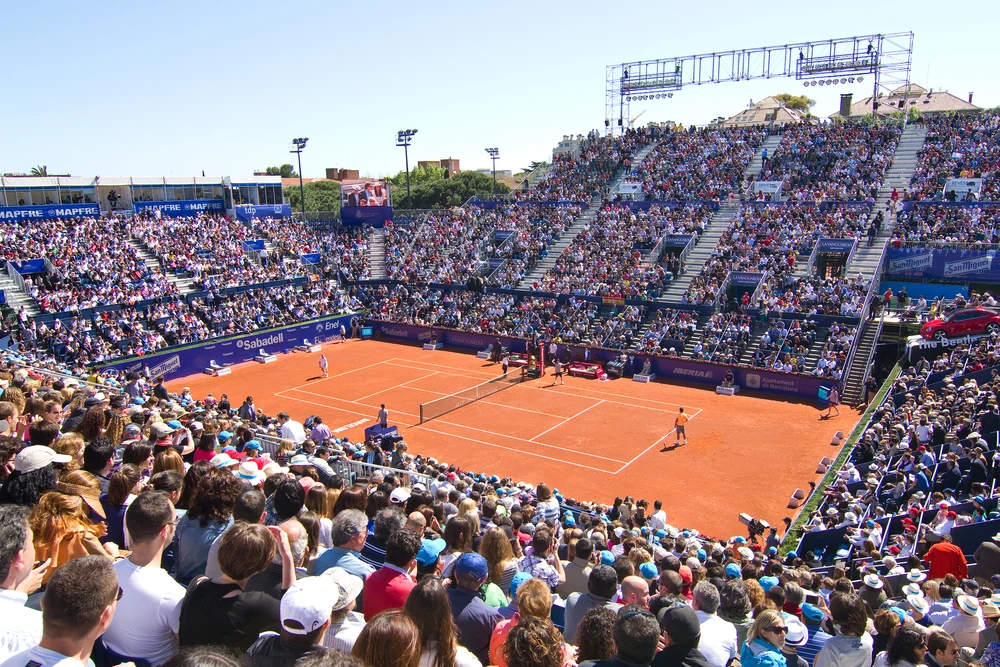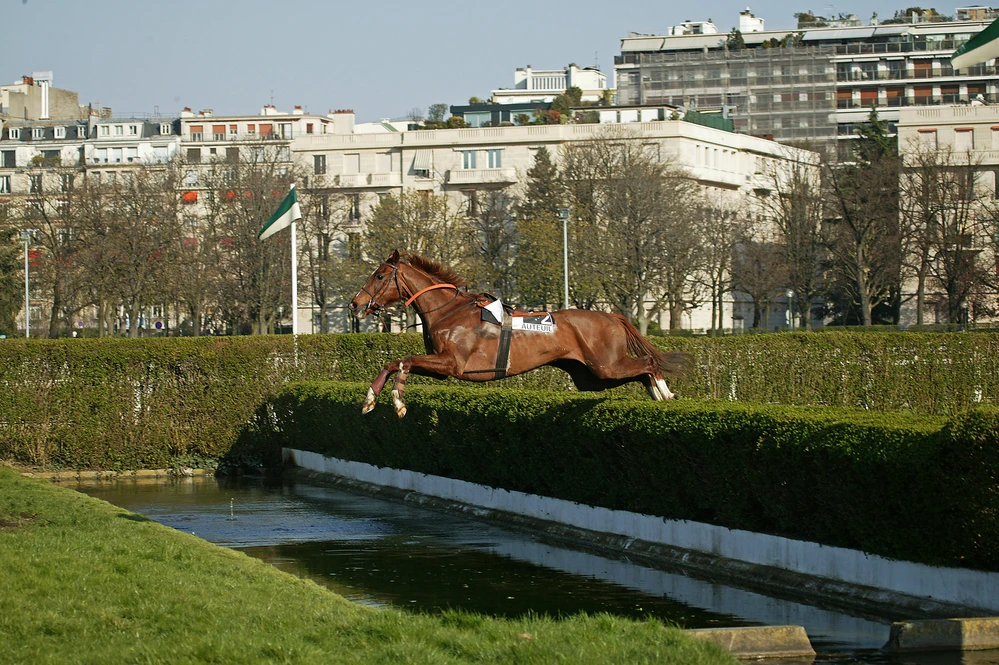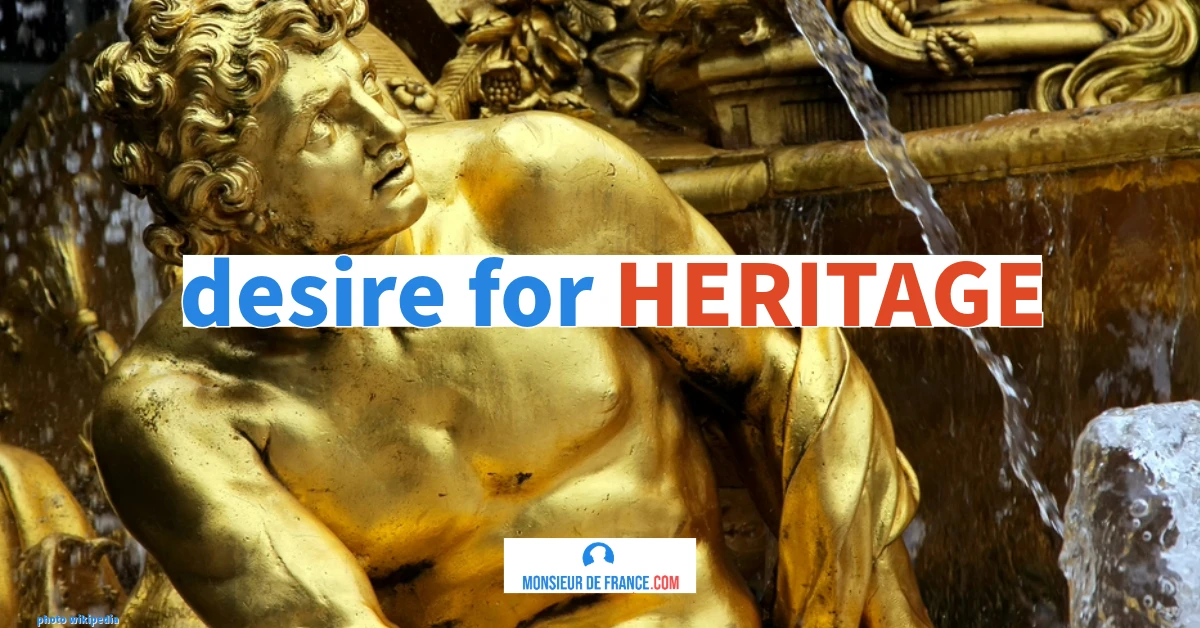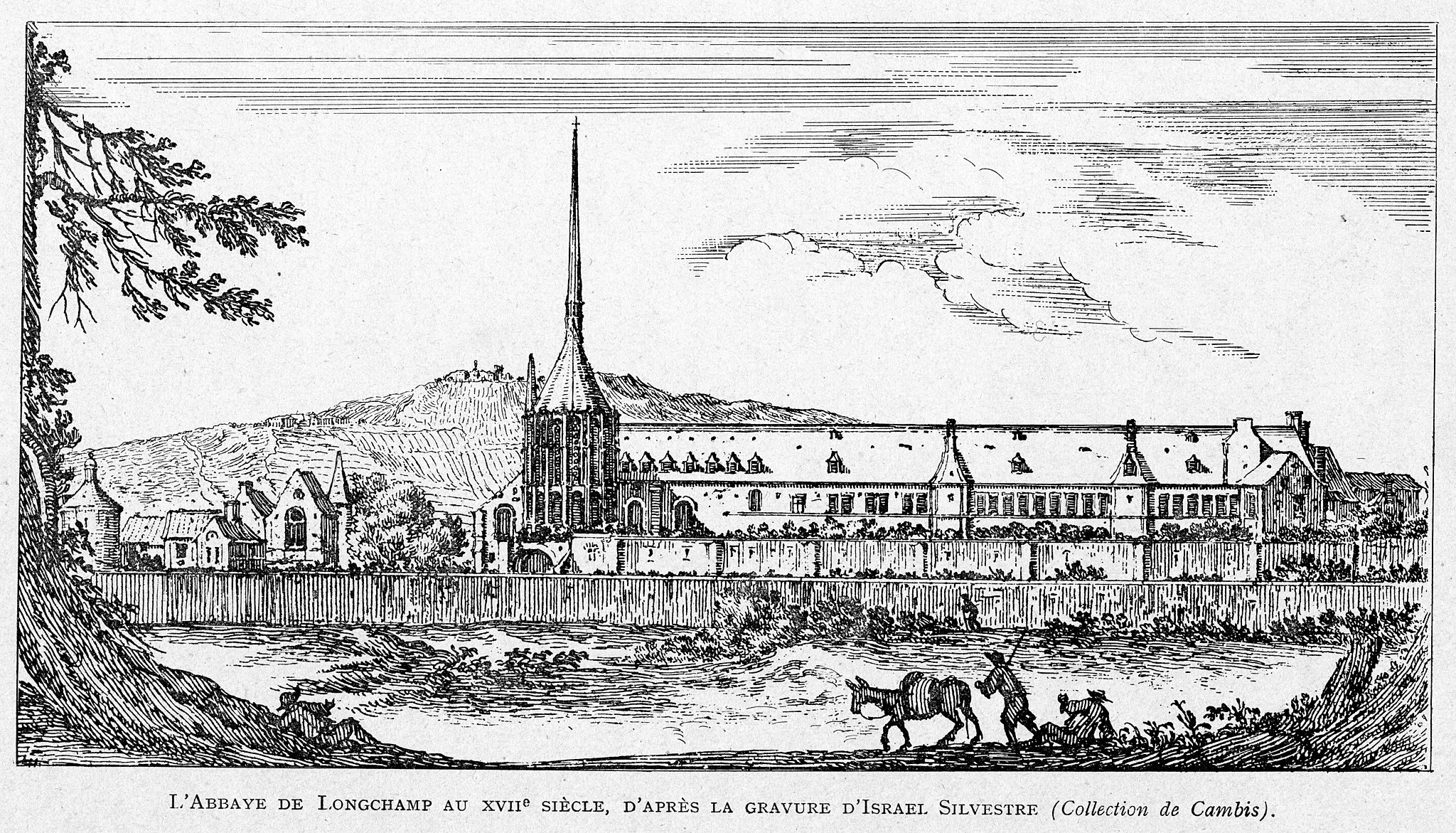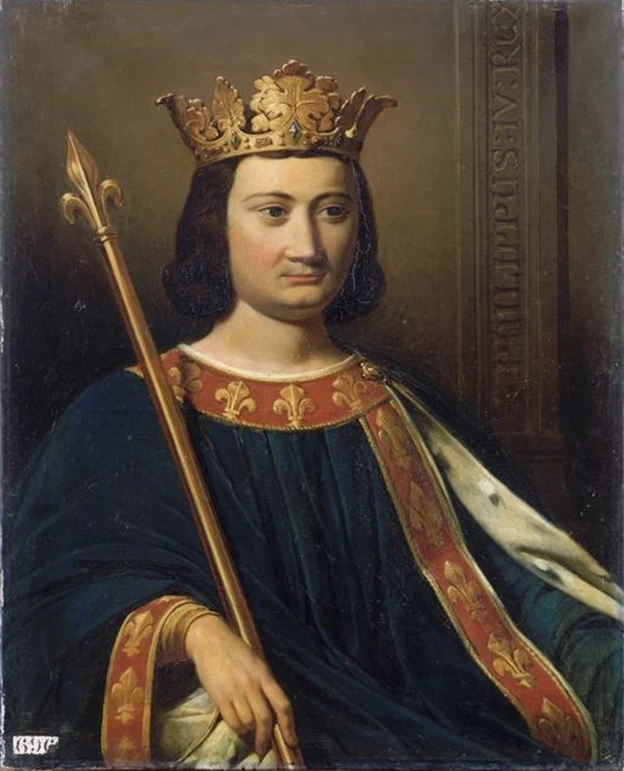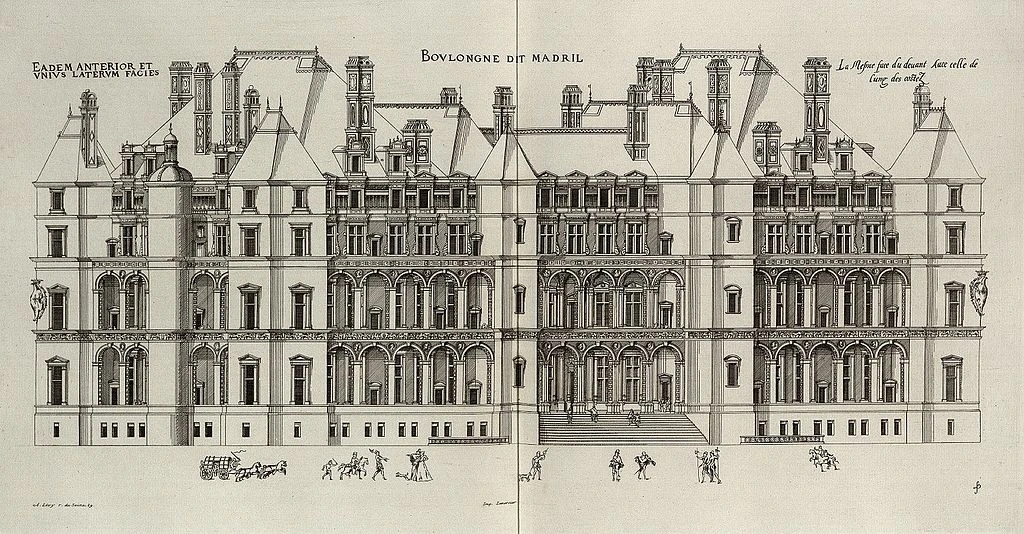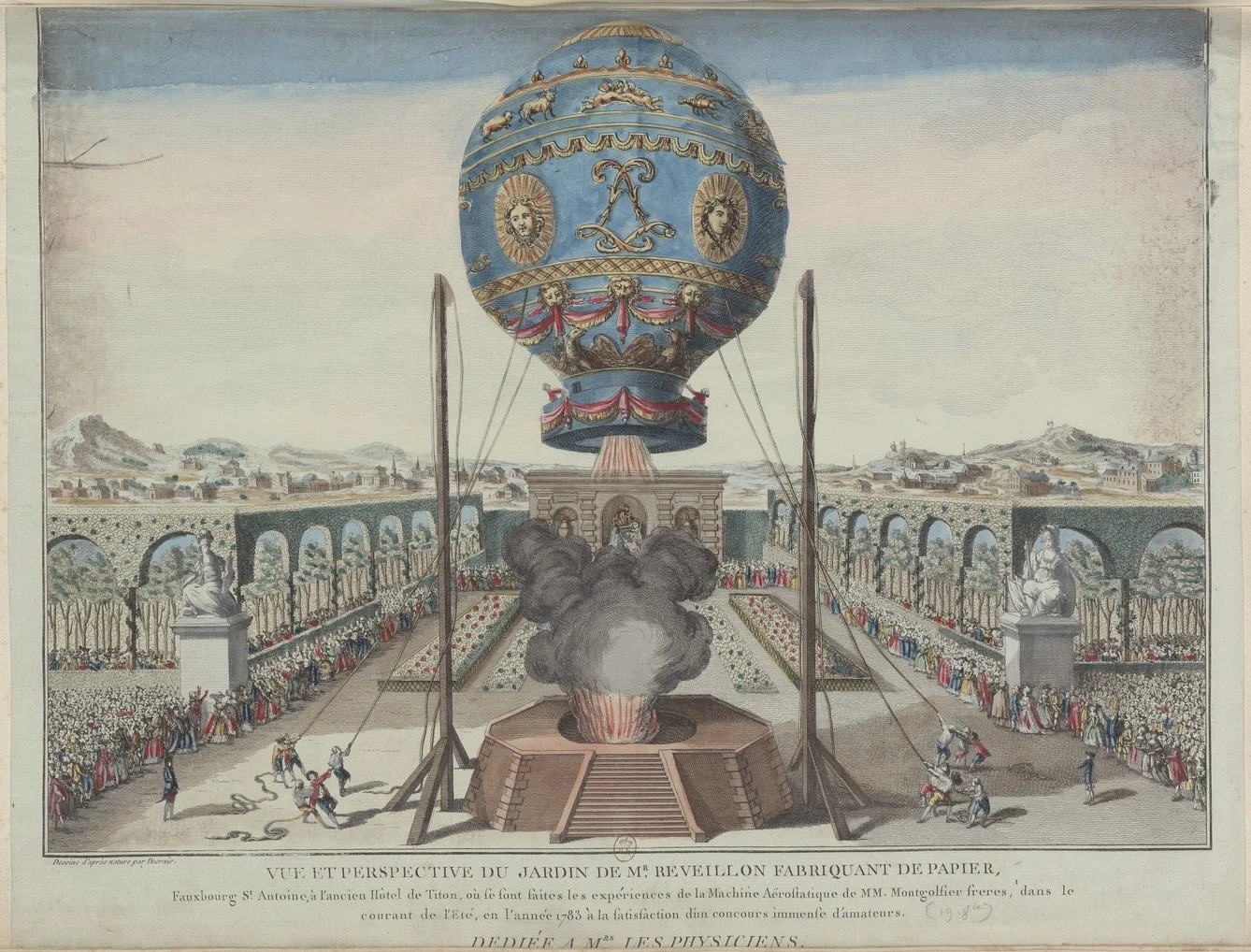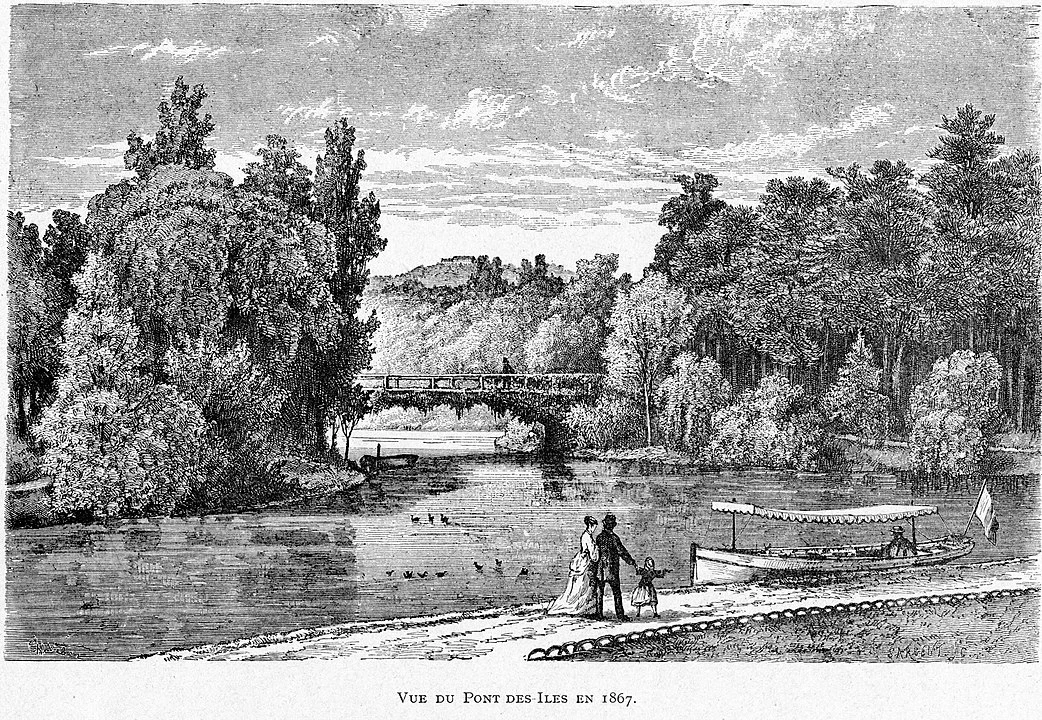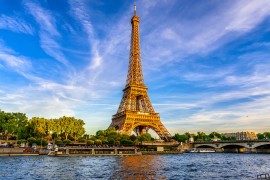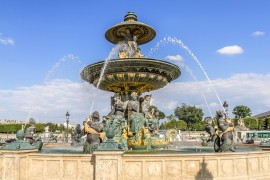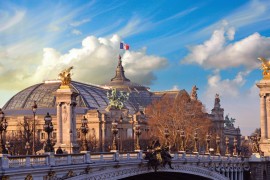Here is a summary of what you will read in the article dedicated to the Bois de Boulogne in Paris.
It tells you the history of this vast green area and its place in Parisian life.
You will discover the main sights, walking areas, and places of interest.
The article also provides information on access, practical details, and possible schedules.
It will help you plan your visit to this iconic location.
This summary gives you the essentials before reading the full article.
To the west of Paris, between the 16ᵉ arrondissement and the Seine, le Bois de Boulogne covers 846 hectares, almost twice the size of New York's Central Park. Created under Napoléon III by prefect Haussmann and engineer Jean-Charles Alphand, this vast green space was conceived as a place for strolling, leisure and escape for the capital's inhabitants.
Les oies bernaches du Parc de Bagatelle / Photo chosen by monsieurdefrance.com: Encrier via depositphotos.
Its name comes from the village of Boulogne-la-Petite, itself inspired by Boulogne-sur-Mer, where Louis IX built a church dedicated to Notre-Dame. Today, it's a world apart in the heart of the metropolis: forests, ponds, waterfalls, bridle paths, botanical gardens, rose gardens and cultural venues rub shoulders. Le Bois de Boulogne, it's Paris that breathes. You can walk, pedal, row, picnic here. You'll meet morning joggers, families boating on the lakes, lovers of the Auteuil greenhouses or the curious at the Fondation Louis Vuitton.
It's a place of contrasts, where the refinement of gardens rubs shoulders with wild nature, and where Parisian history has left its mark: kings, emperors, universal exhibitions and landscape innovations.
Must-sees and must-dos at Bois de Boulogne
Lakes and promenades: a romantic Parisian landscape
This is undoubtedly the most emblematic part of the wood. The two artificial lakes, dug between 1852 and 1858, are linked by an artificial waterfall and a series of islands accessed by boat.
The lower lake of the Bois de Boulogne. You can go boating there. Photo chosen by monsieurdefrance.com UlyssePixel via depositphotos.
The Grand Lac, lined with willows and plane trees, invites you to take a boat ride from the Chalet des Îles, a restaurant accessible by jetty.
The Petit Lac, more discreet, offers reflections of calm water and greenery conducive to meditation.
Boats on the lower lake. Photo chosen by monsieurdefrance.com UlyssePixel via depositphotos.
The surrounding paths wind between flower beds and undergrowth, drawing a postcard landscape from the XIXᵉ century Today's walkers still follow in the footsteps of the elegant ladies who came to admire the romantic "fabriques" and faux rocks imagined by Alphand.
To walk in the Bois de Boulogne is to walk through a setting built to dream.
The gardens and greenhouses of Auteuil: a plant masterpiece
It's one of the Bois de Boulogne's most elegant treasures. Created at the end of the XIXᵉ century, the Serres d'Auteuil form a unique ensemble of botanical gardens and monumental greenhouses where thousands of plant species from all over the world flourish.
Beneath their great blue-green canopies, we discover giant palms, rare orchids, tropical ferns and even water lily basins. The metal architecture, signed Jean-Camille Formigé, brings science, art and light into dialogue.
We come across visitors from all walks of life in the Bois de Boulogne. Here a peacock from Bagatelle Park. Photo chosen by monsieurdefrance.com: encrier via depositphotos.
Around them, the French and English gardens alternate rigor and freedom: geometric parterres, rose gardens, flower-filled lawns. It's a haven of peace where perfumes and colors vary with each season.
Today, the greenhouses belong to the Jardin botanique de Paris, part of the Muséum d'histoire naturelle, and regularly host floral exhibitions or concerts. Admission is free all year round, and botanical enthusiasts will find this a paradise on a human scale.
The Rose Garden and Bagatelle Park: the elegance of the XVIIIᵉ century
Nestled in the northern part of the wood, le parc de Bagatelle is one of the most refined places in Paris. It owes its existence to a wager: the one made in 1777 between Marie-Antoinette and the Comte d'Artois, brother of Louis XVI. The latter promised to build a château and garden in less than three months. The gamble paid off: the Château de Bagatelle rose from the ground in 64 days!
The Bagatelle pagoda. Photo chosen by monsieurdefrance.com: moskwa via depositphotos.
Today, the site retains the charm of the XVIIIᵉ century, with its small palace, grottoes, waterfalls and above all its world-famous rose garden. Over 10,000 rosebushes representing more than 1,200 varieties are grown here; every summer, the Concours international de la rose de Bagatelle The winding paths, rustic bridges and romantic fabriques recall the Anglo-Chinese gardens of the Age of Enlightenment. This is Bois de Boulogne at its most exquisite, a jewel box of fragrance and poetry where it's good to stroll.
La magnifique roseraie du parc de Bagatelle / Photo chosen by monsieurdefrance.com: Moskwa via depositphotos.
Fondation Louis Vuitton: contemporary art in the heart of nature
The stunning façade of the Louis VUITTON Foundation. Photo chosen by monsieurdefrance.com : azgek1978 via depositphotos.
Since 2014, a silhouette of glass and steel has floated above the trees: the Fondation Louis Vuitton. Designed by architect Frank Gehry, this bold building is reminiscent of a wind-inflated sailboat. The interior houses a first-rate collection of modern and contemporary art: Rothko, Monet, Basquiat, Hockney, as well as temporary exhibitions that attract hundreds of thousands of visitors every year.
Around the museum, ponds, walkways and terraces offer spectacular views of the wood and the Paris skyline. The site illustrates the vocation of the Bois de Boulogne: an open-air space for culture and breathing. To get there, an electric shuttle runs directly from Place Charles-de-Gaulle-Étoile to the museum (about every 10 minutes). The marriage of art and nature here achieves a rare harmony.
Sports and family activities: living wood
The Bois de Boulogne is more than just a backdrop: it's a place where people live every day.
runners take to the forest trails at dawn, cyclists ride along the lakes, and horse club riders cross the sandy fairways. The children enjoy the playgrounds, the Jardin d'Acclimatation (created in 1860), a veritable historical amusement park with mini-farm, merry-go-rounds, water attractions and shows for young and old.picnics are permitted in certain areas (notably near Lac Inférieur), and families like to spend the whole day there.
You can play sports in the Bois de Boulogne / Photo chosen by Monsieur de France: by Dominic Winkel from Pixabay
In summer, the wood hosts outdoor concerts, festivals and temporary exhibitions, while waterside restaurants like Chalet des Îles offer a gourmet stop-off along the way. The Bois de Boulogne is the Paris of leisure and fresh air, a breath of fresh air that links the capital to the countryside without leaving the ring road.
Around the Bois de Boulogne
The Bois de Boulogne isn't just nature: it's also the birthplace of great Parisian sporting institutions. Two names stand out: Roland-Garros and Longchamp, symbols of French elegance and performance.
Roland-Garros: the mythical clay court
The Roland Garros stadium and its famous clay courts / Photo chosen by monsieurdefrance.com: natursports via depositphotos.
On the southern edge of the wood, the Stade Roland-Garros is much more than a sports complex: it's a high point of national heritage. Inaugurated in 1928, it becomes the scene of the Tournoi de Roland-Garros, the second Grand Slam lift, which attracts over 500,000 spectators each year. The red clay courts, elegant grandstands and green décor make it a place where sport meets French art de vivre. Outside the tournament, you can visit the site and discover the musée du tennis, tracing the history of this emblematic sport.
Longchamp racecourse: racing and prestige
On the north bank of the wood lies the Hippodrome de Paris-Longchamp, inaugurated in 1857 under Napoleon III. It's here that the heart of the Parisian turf beats, in a setting that's both worldly and pastoral. Every autumn, it hosts the Prix de l'Arc de Triomphe, considered the world's greatest gallop race, where elite thoroughbreds and elegant spectators mingle. Recently renovated, the racecourse now offers modern facilities, panoramic restaurants and open-air concerts. Longchamp is the nobility of the horse and the charm of Parisian tradition, a place where speed, chic and greenery meet.
Jumper race on the Auteuil racecourse. Photo chosen by monsieurdefrance.com: slowmotiongli via depositphotos.
3 tips for enjoying the Bois de Boulogne
-
Come early in the morning or at sunset: the light is magical on the lakes, and the calm of the woods contrasts with the hustle and bustle of Paris.
-
Please bring a picnic and comfortable shoes: 846 hectares, that's got to be earned! The most beautiful relaxation areas are near Grand Lac and Bagatelle.
-
Combine nature and culture: visit the Fondation Louis Vuitton, then stroll through the Auteuil gardens - a perfect marriage of art and greenery.
Practical information: Bois de Boulogne
Adresse :
Bois de Boulogne, 75016 Paris, France
How to find us :
- Métro : Porte Dauphine (line 2), Porte d'Auteuil (line 10), Les Sablons (line 1)
- Bus : 32, 52, 63, 241, PC1
- Bicycles: several Vélib' stations around the Bois (Boulogne, Porte Maillot, Porte d'Auteuil)
- Car: parking lots near Jardin d'Acclimatation, Bagatelle and Fondation Louis Vuitton
Opening hours :
- Open all year round, 24 hours a day (but some sites close in the evening).
- Les serres d'Auteuil: 8am-5.30pm (6.30pm in summer).
- Parc de Bagatelle: 9.30am-6pm (variable according to season).
- Fondation Louis Vuitton: closed Tuesdays, 11am-8pm (until 11pm on Fridays).
Tarifs :
Access to the woods is free. Some sites (Bagatelle, Fondation, special events) charge a fee.
Toilets and accessibility :
Public toilets are available near the Jardin d'Acclimatation, Bagatelle, and Serres d'Auteuil.
The site is partially accessible to people with reduced mobility (sanded walkways, ramps, shuttles).
The amazing history of the Bois de Boulogne: from kings to modern-day Parisians
L'abbaye de Longchamps stood on the site of the current racecourse before its destruction during the French Revolution in 1794. Image selected by monsieurdefrance.com: engraving by Israel Sylvestre Public domain, via Wikimedia Commons
Boulogne: a name from the seaside to Paris
What used to occupy today's Bois de Boulogne was for a long time a forest: the Rouvray forest (i.e. the place planted with oak trees). This forest is mentioned as early as the 8th century. It was hunting territory for the kings of France, even though it belonged to the monks of Saint Denis Abbey, who eventually sold the place to the kings of France. L'abbaye de Longchamp was founded in 1256 by Saint Louis' sister Isabelle de France (the abbey was destroyed in 1794, but a mill near the Longchamp racecourse remains). In 1308, the area changed its name to "le bois de Boulogne";
King Philippe IV le Bel imagined in 1837 by Jean Louis Bezard - art.rmngp.fr, Domaine public, https://commons.wikimedia.org/w/index.php?curid=16504826
That year, King Philippe IV le Bel (1268-1314) decided to build a chapel dedicated to Notre Dame de Boulogne sur Mer. It was on his way to marry his daughter Isabelle to Edward II of England that the king discovered the shrine dedicated to the statue of the Virgin who had supposedly appeared during a shipwreck. Impressed, the king wanted a copy of the statue to be installed in a chapel dedicated to her. The forest of Rouvray began to take the name of the religious site, which became a place of pilgrimage;
The ill-famed woods near Paris;
Like all forests in the Middle Ages, the Bois de Boulogne is dark and a good place for brigands. So it was with a faint heart that travelers crossed it to leave Paris for the West and Normandy. During the 100 Years' War, the English nestled here. they attacked and robbed Bertrand du GESCLIN a great French military leader in 1358. The Burgundians burned the forest a few years later. It wasn't until the reign of Louis XI, after the 100 Years' War, that the area became quiet. The forest remained dense until it was destroyed in the 19th century when the park we know today was developed.The forest was still dense in 1793, serving as a refuge for Parisians threatened by the French Revolution.
The lost castles of the Bois de Boulogne
Engraving of the Château de Boulogne dit Madrid by Jacques I Androuet du Cerceau, Public domain, via Wikimedia Commons
What's astonishing about the history of the Bois de Boulogne is the many innovations and original constructions that punctuate its history. For example, in 1528, King François 1er (1494-1547), to whom we owe Chambord, had a huge château built called "le château de Madrid". It is thought to have been called "Madrid" in reference to the king's forced stay in Spain when he was taken prisoner after a defeat. As courtiers had taken to saying "the king is in Madrid" to mean he was nowhere to be seen, the name is thought to have been given to the castle where the king sometimes retired. This castle was decorated with a great deal of faience, earning it the nickname "the faience castle". The interior was spectacular too. The residence of several French kings, including Charles IX and Louis XIII, it was abandoned by Louis XIV, and the kings of France no longer came here. It was abandoned by Louis XVI in 1787, shortly before the French Revolution, and put up for sale. It was largely demolished in 1792 and disappeared in the 19th century. It was not far from the Château de Madrid that King Henri IV (1553-1610) decided to install 10,000 mulberry trees to give birth to a silk industry in Paris. A silk stocking factory was set up here 50 years later, but failed to survive in the face of a lack of workers.
La Muette the vanished castle
The first flight by a human being was in this type of hot-air balloon in 1783. Photo chosen by monsieurdefrance.com : Claude-Louis Desrais, Public domain, via Wikimedia Commons
It was the famous and sulphurous Reine Margot, Marguerite de Valois (1553-1615), first wife of Henri IV, who built her first château at La Muette in the Bois de Boulogne (known as La Meute in those days). She offered it to Louis XIII, the son of her first husband, with whom she got on very well. Later, Regent Philippe d'Orléans (1674-1723) enlarged and modified the château, where the young Louis XV, his ward, made frequent visits and learned to ride and hunt. The place became his favorite residence, and he bought it back before having it razed and then rebuilt in keeping with the zeitgeist of his time. It was from the château's grounds that the first human flight took place. On November 21, 1783, a hot-air balloon took off from the park at 2pm. It carried the first 2 human beings to fly: Pilâtre de Rozier and François Laurent d'Arlandes. They land safely a few minutes later. Abandoned by Louis XVI and badly damaged by the French Revolution, the château was rebuilt at the end of the 19th century. It is now the headquarters of the O.C.D.E.
When war strikes the Bois de Boulogne
Very close to Paris, the Bois de Boulogne has suffered the horrors of war. Incendered in the Middle Ages by the Burgundians at war with Charles V King of France, it was also home to Russian armies when Napoleon I was defeated in 1814. 40,000 Russian and English soldiers moved in and ravaged the area in just a few months, to such an extent that it had to be reforested in 1815 (and 2 wide roads were laid out to cross it). In 1870, it was bombarded by Prussian artillery, who then moved in in their turn in 1871. In 1914, it was bombarded by "Big Bertha", a large German cannon that regularly bombarded Paris. The Auteuil racecourse was badly damaged. It was then used to house animals waiting to be slaughtered and eaten by Parisians. It even became an airfield during the First World War;
The birth of the Bois de Boulogne: one of the largest public parks in the world
The Bois de Boulogne in 1867. Image chosen by Monsieurdefrance.com: Corbel26 via wikipedia.
Amputated by the creation of Thiers' enceinte in 1840 (a sort of protective wall for Paris), the Bois de Boulogne attracted the interest of France's rulers, who began to take care of it. Louis XVIII had new oak trees planted there in 1820, to replace those damaged by the Russian and English armies. A few years later, in 1852, Emperor Napoleon III, who was literally going to have Paris rebuilt, gave the Bois de Boulogne to the city of Paris, with the responsibility of developing and maintaining it. This is how today's Bois de Boulogne came into being. The first engineer is dismissed after miscalculations and is replaced byengineer Adolphe ALPHAND (1817-1891) and landscape architect Jean Pierre BARRILLET DESCHAMPS. They are notably responsible for the 2 lakes, the islands, and the current physiognomy in the form of an English-style park. Racecourses arrived a few years later, in 1853 and 1873. The Fondation Vuitton was built in 2014;
FAQ: everything you need to know about the Bois de Boulogne
How big is the Bois de Boulogne?
The Bois de Boulogne covers 846 hectares, almost twice the size of Central Park.
Is it safe to walk around at night?
The wood is open 24 hours a day, but it's best to visit during daylight hours to enjoy the walks in complete safety.
Where can I rent a boat?
Boats can be rented at Grand Lac, near Chalet des Îles, from April to October, weather permitting.
Are there any restaurants in the woods?
Yes, several establishments are located around the lakes and in Bagatelle, including the Chalet des Îles, accessible by rowboat.
Can we picnic freely?
Yes, in certain designated areas (notably near Lake Inferior). Please respect protected areas.
Are dogs allowed?
Yes, on a leash. However, the areas around lakes and botanical gardens require extra vigilance.
Is the Bois de Boulogne child-friendly?
Absolutely: the Jardin d'Acclimatation offers family-friendly activities, and many trails are stroller-friendly.
Where to see flowers in spring?
At the roseraie de Bagatelle (May-June) and the Serres d'Auteuil, where the orchid collections are spectacular.
Can I visit the Fondation Louis Vuitton without a ticket?
Yes, but we strongly advise you to book online on the official foundation website to avoid the wait.

